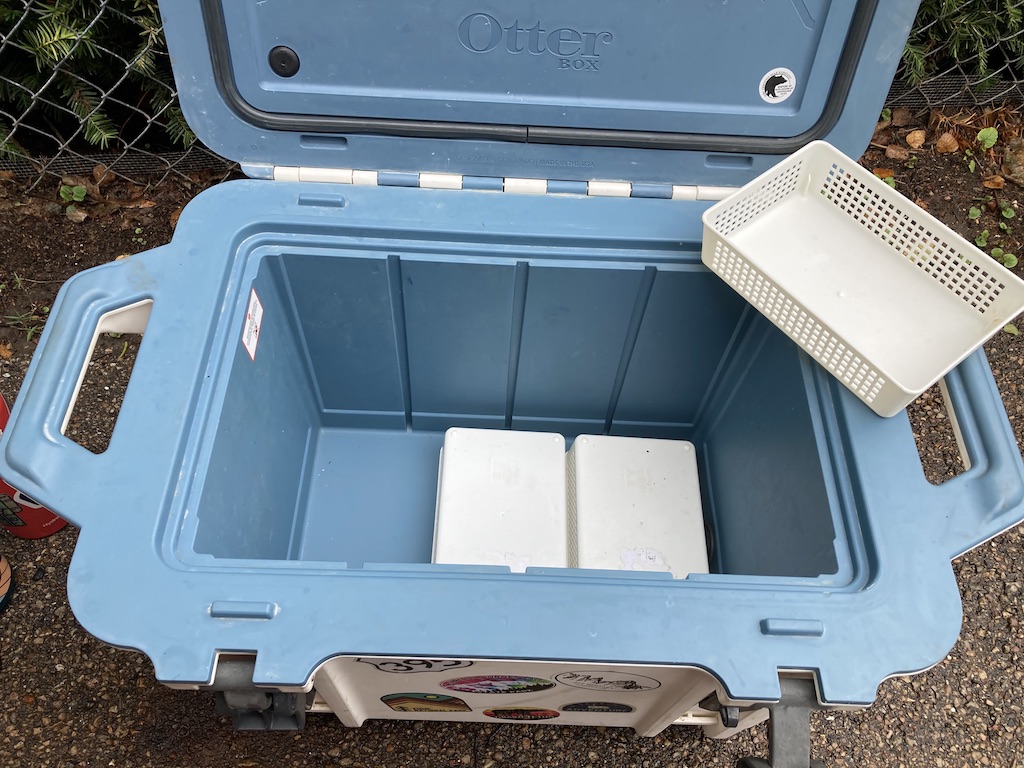Roadtrip and dispersed camping tips
I recently finished a 6 week roadtrip that meandered from California, through many Western states, including Utah, Oregon, and Montana, and ended up in Wisconsin. Even though I traveled through many beautiful places, I’m going to focus this post on some small tips and tricks that made the trip and camping experience just a bit more fun and easier.
During this trip, I camped nearly every night, with perhaps 3 or 4 nights spent in a hotel or cabin. Given the current COVID situation, along with my lack of income, camping was the safest and most cost-effective method of traveling.
Maps
I traveled through and camped in a lot of National Parks and National Forests. And while they are all super beautiful, many do not have great cell service. This is usually amazing, but some preparation is needed to ensure a low-stress trip. Like many of us, I tend to rely on my phone for most mapping needs nowadays. This is still possible with just a little bit forethought. A few easy things to do:
- Download offline maps for Google Maps - You can select various “rectangles” of map to download. I tended to try and capture as much of the area as possible. This would help with navigation as well as looking for gas stations and restaurants. Hint: If you have very marginal service but had already downloaded maps, Google Maps sometimes works better if you go on Airplane mode.
- Download offline maps for GAIA GPS - Gaia is my goto app for overlanding, 4x4ing, and hiking. It gives me a ton of trail and elevation information. Again, I download as much as I can so I can have a better idea of what I’m doing once I’m out of cell service.
- Purchase National Geographic maps for the area - I love discovering and exploring via map, and nothing beats a really great paper map. National Geographic makes some really wonderful maps that are worth purchasing.
Finding campgrounds
When heading across country, I did not generally reserve campsites more than 24 hours in advanced. Actually, most nights, I did not have reservations and found first-come campsites.I also tried to avoid National Park campsites, both due to availability and proximity to other people. The following tools are super useful in finding some amazing campsites:
- AllStays Camp and RV App - This app is beyond invaluable. It shows every type of campsite you can imagine: BLM, State Park, National Park, Indepdent, etc. I used this nearly every day.
- Hipcamp - When I needed to find a site in a more populated area, I looked on Hipcamp. While they are generally more expensive, there are some beautiful campsites and can be helpful when in a bind.
- BLM Camping - Bureau of Land Management offers free dispersed camping on nearly all their lands. However, each area may have specific rules, so its worth looking into each one to learn about their specific restrictions.
Smart Gas Tactics
When traveling in National Forests, you don’t necessarily know where the next gas station will be. And to add complication, I have found a number that were supposed to be open and weren’t, or were just out of fuel. A few smart gas tactics are:
- Always fill up your tank before entering the National Forest or very dispersed area
- When your tank drops below 1/2, start looking for your next gas station (this is where having offline maps is extremely useful!)
- Carry a extra, full tank of fuel - I had a 5 gallon tank with me for my entire trip, which is about 80 miles with my truck. I luckily did not have to use it, but got close a few times.
Small creature comforts
I setup my camp every night, after usually traveling a few hours. I had a few things that made it just a little bit nicer:
-
Little side table for drinks - After the first few nights, I realized that it would be super nice to have a little side table. Serendipitously, that afternoon, I stumbled upon a redwood store, which had slices of redwood for sale. I bought a beautiful slide one with a few blocks and made a mini side table! Honestly, just delightful!

- My desk - This sounds a little strange, but I brought with me a small, folding desk. This was, again, invaluable. I used this every night for cooking, writing, putting my feet up, or whatever was needed. My truck isn’t big enough to carry a full-size folding table, so this small table was absolutely perfect.
- Hammock - More specifically, this Doublenest Hammock with these straps.
Cooler hack!
In my cooler, I put three little baskets in the bottom, flipped upside down. This way, as the ice melted, most of the water went below the top of the baskets, and none of my food got soaked in water! While there are many ways to keep your food dry from ice-melt. this method worked well for my lazy self.
